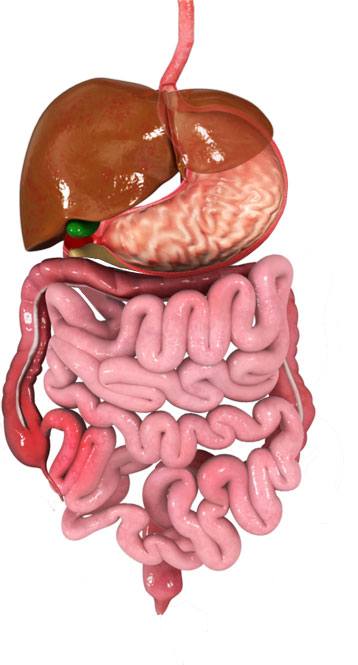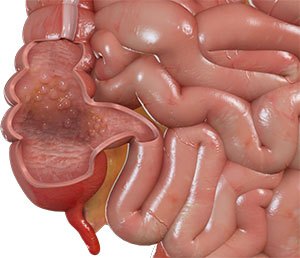Small Intestine Surgery

The intestine, a part of the digestive tract, is a long continuous tube, extending from the stomach to the anus consisting of the small intestine, large intestine and rectum.
The small intestine (small bowel) which is about 20 feet long and 1 inch in diameter is the largest part of the digestive tract that is divided into three parts – duodenum, jejunum, and ileum. The small intestine folds several times to fit inside the abdomen and plays a vital role in digestion of food and absorption of nutrients and water from the digested food into the body.
There are a number of diseases that can affect the function of the small intestine. Some of these include:
- Bleeding, Infection or ulcers
- Cancer
- Crohn’s disease (inflammatory bowel disease)
- Intestinal blockage or obstruction
- Injury to small intestine

Symptoms
The types of symptoms depend on the condition affecting the small intestine. However, a few common symptoms include nausea, abdominal pain and cramping, rectal bleeding and weight loss.
Diagnosis
Small intestine disorders and other common diseases share some common symptoms making the diagnosis difficult. However, along with a detailed history and physical examination, a few tests may be performed that include CT scan, barium enema X-ray and capsule endoscopy.
Surgical Treatment
While a few conditions of the small intestine like inflammation or infection can be treated with medicines, obstructions or cancer usually require surgery. Small intestine surgery can be done using one of two methods:
- Open technique: Your surgeon will make a 6-inch-long incision in the abdomen where the diseased portion of the small intestine is located.
- Laparoscopic technique: Your surgeon will make 3-4 small incisions in the abdomen. One of the incisions may be enlarged (2-3 inches) so as to allow one hand to be placed within the abdomen and remove the diseased segment of the small intestine. The laparoscope (a small, thin tube with a light and tiny video camera that helps visualize the organs during the operation) is inserted into the body through one of the incisions. The television monitor will guide the surgeon to insert other surgical instruments through the other incisions. Air or carbon-dioxide is injected into the abdomen to inflate the abdominal cavity so that the internal organs can be visualized easily.
In both the techniques, the diseased section of the small intestine is clamped off and then removed. The open ends of the small intestine are then connected together using stitches or staples. If there is not enough healthy intestine to re-connect the ends, an ileostomy may be performed. In this procedure, an opening called a stoma is created in the abdominal wall and then the end portion of the intestine close to the stomach is attached to the stoma. The contents of the small intestine are drained out through the stoma into a sealed pouch or bag attached to the abdomen. An ileostomy may be either temporary or permanent.
Risks and Complications
The potential risks and complications of having small intestine surgery include:
- Bleeding in the abdomen
- Frequent diarrhea
- Injury to the adjacent organs
- Protrusion of the intestine through the incision into the abdomen causing incisional hernia
- Intestinal blockage caused by scar tissue that can develop in the abdomen
- Short bowel syndrome that causes problems with absorption of vitamins and nutrients
- Leakage at the region where the open ends of the intestine are sewn together
- Problems with the stoma, the opening created in the abdominal wall
- Opening of the incision (dehiscence)

















